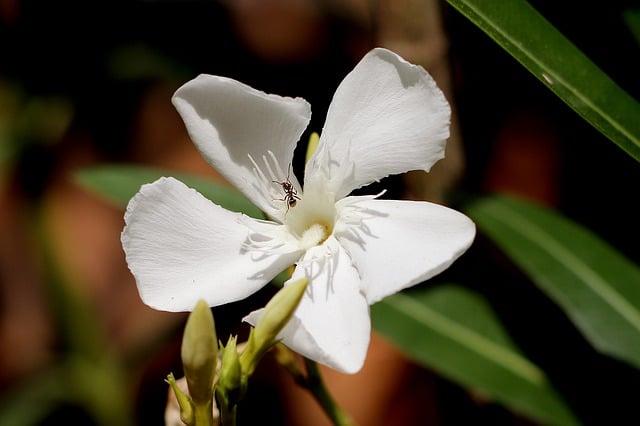
The species Nerium oleander is known as oleander.
The Greek word dáphnē , which can be translated as “laurel” , came into classical Arabic as diflà . This term , in turn, derived from the Hispanic Arabic addífla , which is the direct etymological antecedent of oleander .
The Royal Spanish Academy ( RAE ), in its dictionary, indicates that the oleander is a shrub that is part of the Apocynaceae family group. It is a poisonous plant whose leaves resemble those of the laurel, and also has grouped flowers that can have different shades.
Oleander characteristics
The oleander, whose scientific name is Nerium oleander , is also known as rose laurel , flower laurel , Roman laurel , trinitaria or baladre . The species was described by Carlos Linnaeus in 1753 , in his famous work “Species Plantarum” .
Native to areas such as the Mediterranean , Vietnam and China , oleander has been introduced to numerous countries as it is used as an ornamental plant . In addition to being grown in gardens, it is often used on highways and roads to separate lanes.
Capable of reaching a height of up to four meters, its leaves have extremely marked veins. The flowers have a reddish calyx and acute, lanceolate lobes.
Toxic components
Because it has different highly toxic components, oleander is mentioned as a poisonous plant . If there is prolonged contact with its sap , it is possible to develop dermatitis or suffer eye problems.
Ingesting a large amount of oleander, on the other hand, can cause an alteration in heart rhythm, pain in the abdomen, nausea, diarrhea and vomiting. The most toxic compounds are concentrated mainly in the roots , followed by the leaves and stems.
Livestock often suffer poisoning from eating oleander. This happens with sheep, goats, cows and horses , for example. It is interesting to note that there are insects that can feed on this shrub without suffering negative consequences: this is the case of the oleander sphinx , a lepidopteran with the scientific name Daphnis nerii .

Oleander flowers can have different colors.
Other plants called oleander
It should be noted that Nerium oleander is not the only plant known as oleander . Epilobium hirsutum , a herbaceous species, may be referred to as small oleander , oleander , hairy oleander , oleander , hairy epilobium , St. Anthony's wort or St. Anthony's laurel .
Zephyranthes carinata is also called oleander , Mary's tears or Mary's heart . Euphorbia mellifera , meanwhile, is called oleander , wild tabaiba , mountain tabaiba or filga .
a woman's name
In Spain , Adelfa is a feminine name. We can mention Adelfa Soro , a Dominican nun, martyr and blessed born in 1887 and murdered in 1936 within the framework of the Civil War .
The actress Adelfa Calvo , for her part, achieved fame thanks to her work in series such as “El secreto de Puente Viejo” , “La casa de papel” , “Toy Boy” and “El Ministerio del Tiempo” and in films such as “ Orange Honey” , “The Author” , “The Minimal Island” and “The Summer We Lived” .
Play “The Adelfas”
In 1928 , at the Eldorado Theater in Barcelona , a play titled “Las adelfas” premiered, written by the brothers Antonio and Manuel Machado . That staging featured Lola Membrives , Luis Roses , Guadalupe Muñoz Sampedro and Manuel Soto Vives as protagonists.
The central character of “Las Adelfas” is the Duchess of Tormes , a woman named Araceli who suffers nightmares related to her dead husband. Faced with this situation, she goes to a doctor friend and begins to talk with different people who treated her husband, discovering details about the deceased that she did not know.
